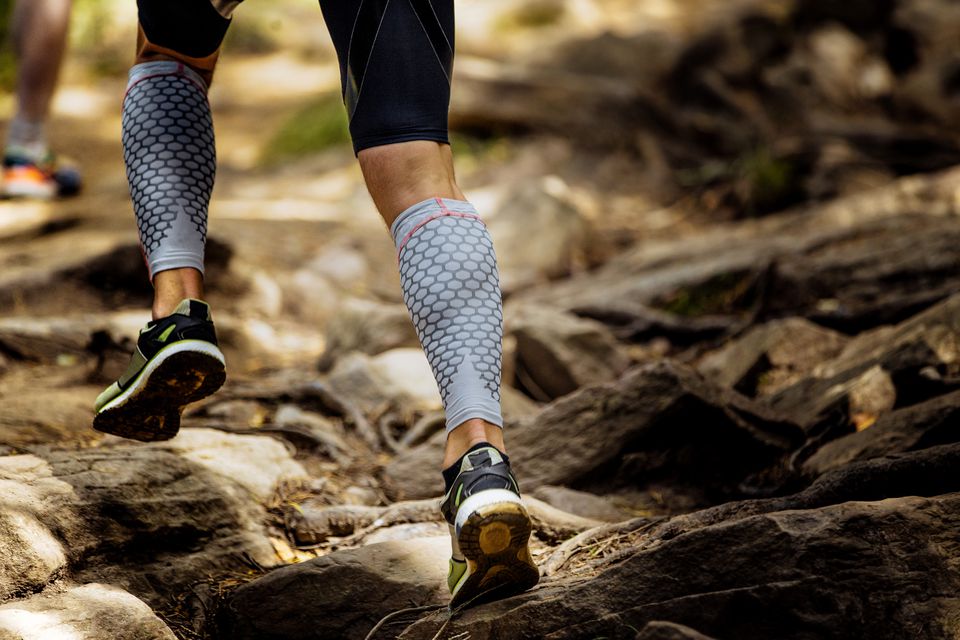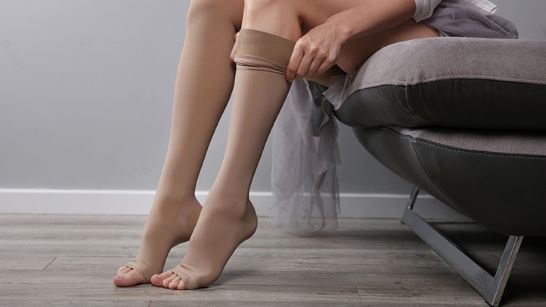People wear compression socks for convenience, athletics, and preventing severe medical issues. They substantially enhance blood circulation and relieve the pain and inflammation of the legs. It may also decrease the risk of developing deep vein thrombosis (DVT), a type of blood clot, and other blood flow concerns.

What are Compression Socks?
These are carefully crafted snug-fitting, elastic socks that delicately compress the legs. Graduated compression socks for women and men are tight around the ankle area and loosen as it moves higher. They are available over-the-counter. However, if your physician prescribes them, your insurance might include coverage for their cost.
You can also buy them in medical equipment stores, online shops, and drugstores. The price ranges from $10 to $100 a pair based on the type you choose as well as the brand.
There are different types of compression socks for women and men. Here are three simple steps to choose the best compression socks for you:
Step 1: Choose Your Compression
Compression socks use a spectrum of pressures in mmHg, for “millimeters of Mercury,” because the strength will vary based on your size.
- 15-20 mmHg – over the counter, casual wear, and fitness rehabilitation
Suitable for everyday wear, traveling, and athletics. This easy-to-wear compression socks improve blood flow without being too tight. - 20-30 mmHg – everyday wear, sports rehab, medical recuperation
Perfect for post-surgery recovery, spider veins, varicose veins, spider veins, and inflammation, according to a varicose veins clinic in Scottsdale.
- 30-40 mmHg – treatment of moderate-to-severe pain, medical rehabilitation, and regular wear
A higher level of pressure prescribed for blood clots (DVT), lymphedema, extreme inflammation, and post-surgery recuperation.

Step 2: Choose if You Want a Sock or a Stocking
• Knee-High
• Thigh High
• Pantyhose/Waist High/Maternity Pantyhose
The rule of thumb is to recognize the affected area. When you have inflammation on your ankles, get knee-high socks. When the swelling is on or above the knee, get thigh-high compression socks or pantyhose.
Step 3: Choose Your Style
1. Opaque fabrics are the most versatile and are suitable for both men and women. They are lightweight, comfortable to wear, and has enough strength to compress your legs. Opaque materials are much more sturdy than sheer stockings and are best suited for post-surgery recovery, varicose veins, and inflammation.
2. Sheer fabrics are compact, translucent, and stylish. These stockings make compression stylish to fit with any fashionable ensemble. Sheer materials do not provide as much control for inflammation and are less resilient against hitches and runs.
3. Sports fabrics are high-tech hybrids, wool, and cotton. Sports compression socks use sturdy materials that manage temperature and moisture. Because of exposure to excessive wear and tear, sports fabrics are developed separately to improve longevity.
This type of compression socks is a perfect solution for inflammation, varicose veins, and post-surgery recovery.
There are several types of compression socks available in the market without the need for a prescription, and they provide many advantages. When you need compression socks for health reasons, a physician should measure your legs so they can prescribe the best type for you and your condition.
It is better to do leg measurements early in the day before the inflammation builds. Measurements made later after swelling begins can lead you to select a type that is too big that it will not be as effective.
Read More:
Choosing The best Knitted Clothes to Wear For Autumn
How To Organize Your Wardrobe for Autumn
The Rise Of Bespoke Fashion
How To Find Your Personal Style

